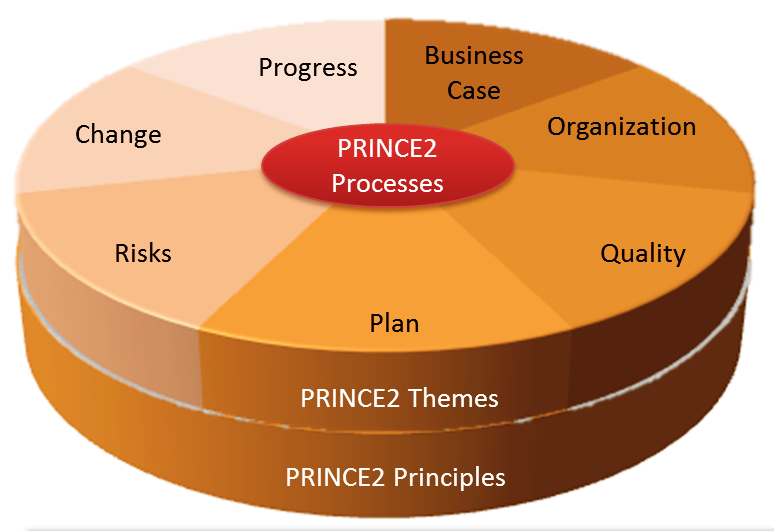|
Configuration Management
Configuration management (CM) is a process for establishing and maintaining consistency of a product's performance, functional, and physical attributes with its requirements, design, and operational information throughout its life. The CM process is widely used by military engineering organizations to manage changes throughout the system lifecycle of complex systems, such as weapon systems, military vehicles, and information systems. Outside the military, the CM process is also used with IT service management as defined by ITIL, and with other domain models in the civil engineering and other industrial engineering segments such as roads, bridges, canals, dams, and buildings. Introduction CM applied over the life cycle of a system provides visibility and control of its performance, functional, and physical attributes. CM verifies that a system performs as intended, and is identified and documented in sufficient detail to support its projected life cycle. The CM process f ... [...More Info...] [...Related Items...] OR: [Wikipedia] [Google] [Baidu] |
ANSI–EIA–649
ANSI/EIA-649, "National Consensus Standard for Configuration Management", is an industry standard for configuration management. Overview ANSI/EIA-649 was developed in 1994, when the Electronic Industries Alliance’s (EIA) G-33 Committee on Data and Configuration Management initiated a task to develop an industry Configuration Management standard. Their goal was to address overall requirements, principles, and best practices in configuration management without mandating the use of specific terminology or approaches on how configuration management (CM) should be implemented in any particular environment. ANSI/EIA 649-B Configuration Management Standard," SAE International, 2013/ref> Instead, this document provides a standardized definition and explanation for configuration management (CM) while also providing the rationale for the various CM processes. This, along with its neutral terminology, allows the standard to be applied in a variety of environments - governmental, industria ... [...More Info...] [...Related Items...] OR: [Wikipedia] [Google] [Baidu] |
ISO/IEC 19770
International standards in the ISO/IEC 19770 family of standards for IT asset managementITAM address both the processes and technology for managing software assets and related IT assets. Broadly speaking, the standard family belongs to the set of Software Asset Management (or SAM) standards and is integrated with other Management System Standards. ISO/IEC 19770 day-to-day management comes under ISO/IEC JTC 1/SC 7/WG 21, or Working Group 21 (WG21) chaired by Ron Brill as convener and Trent Allgood as secretary. It is WG21 that is responsible for developing, improving and ensuring market needs are met when developing these standards. What is the purpose of ISO 19770? The ISO 19770 standard is a concept of ITAM standardization within an organization incorporating ISO/IEC standards. The objective of the standard is to give organizations of all sizes information and assistance to assist at the risk and cost minimization of ITAM assets. Through implementation, these same organiza ... [...More Info...] [...Related Items...] OR: [Wikipedia] [Google] [Baidu] |
Asset Management
Asset management is a systematic approach to the governance and realization of value from the things that a group or entity is responsible for, over their whole life cycles. It may apply both to tangible assets (physical objects such as buildings or equipment) and to intangible assets (such as human capital, intellectual property, goodwill or financial assets). Asset management is a systematic process of developing, operating, maintaining, upgrading, and disposing of assets in the most cost-effective manner (including all costs, risks, and performance attributes). The term is commonly used in the financial sector to describe people and companies who manage investments on behalf of others. Those include, for example, investment managers that manage the assets of a pension fund. It is also increasingly used in both the business world and public infrastructure sectors to ensure a coordinated approach to the optimization of costs, risks, service/performance, and sustainability. ... [...More Info...] [...Related Items...] OR: [Wikipedia] [Google] [Baidu] |
Program Management
Program management, is the process of managing several related projects, often with the intention of improving an organization's performance. It is distinct from ''project'' management. In practice and in its aims, program management is often closely related to systems engineering, industrial engineering, change management, and business transformation. In the defense sector, it is the dominant approach to managing large projects. Because major defense programs entail working with contractors, it is also called acquisition management, indicating that the government buyer ''acquires'' goods and services by means of contractors. The program manager has oversight of the purpose and status of the projects in a program and can use this oversight to support project-level activity to ensure the program goals are met by providing a decision-making capacity that cannot be achieved at project level or by providing the project manager with a program perspective when required, or as a soun ... [...More Info...] [...Related Items...] OR: [Wikipedia] [Google] [Baidu] |
System Integrity
In telecommunications, the term system integrity has the following meanings: # That condition of a system wherein its mandated operational and technical parameters are within the prescribed limits. # The quality of an AIS when it performs its intended function in an unimpaired manner, free from deliberate or inadvertent unauthorized manipulation of the system. # The state that exists when there is complete assurance that under all conditions an IT system is based on the logical correctness and reliability of the operating system, the logical completeness of the hardware and software that implement the protection mechanisms, and data integrity. References * * National Information Systems Security Glossary Committee on National Security Systems Instruction No. 4009, National Information Assurance Glossary, published by the United States federal government, is an unclassified glossary of Information security terms intended to provide a common vocabular ... Telecommunicati ... [...More Info...] [...Related Items...] OR: [Wikipedia] [Google] [Baidu] |
System
A system is a group of interacting or interrelated elements that act according to a set of rules to form a unified whole. A system, surrounded and influenced by its environment, is described by its boundaries, structure and purpose and expressed in its functioning. Systems are the subjects of study of systems theory and other systems sciences. Systems have several common properties and characteristics, including structure, function(s), behavior and interconnectivity. Etymology The term ''system'' comes from the Latin word ''systēma'', in turn from Greek ''systēma'': "whole concept made of several parts or members, system", literary "composition"."σύστημα" Henry George Liddell, Robert Scott, '' [...More Info...] [...Related Items...] OR: [Wikipedia] [Google] [Baidu] |
Application Lifecycle Management
Application lifecycle management (ALM) is the product lifecycle management ( governance, development, and maintenance) of computer programs. It encompasses requirements management, software architecture, computer programming, software testing, software maintenance, change management, continuous integration, project management, and release management. ALM vs. Software Development Life Cycle ALM is a broader perspective than the Software Development Life Cycle (SDLC), which is limited to the phases of software development such as requirements, design, coding, testing, configuration, project management, and change management. ALM continues after development until the application is no longer used, and may span many SDLCs. Integrated ALM Modern software development processes are not restricted to the discrete ALM/ SDLC steps managed by different teams using multiple tools from different locations. Real-time collaboration, access to the centralized data repository, c ... [...More Info...] [...Related Items...] OR: [Wikipedia] [Google] [Baidu] |
Product Lifecycle Management
In industry, Product Lifecycle Management (PLM) is the process of managing the entire lifecycle of a product from its inception through the engineering, design and manufacture, as well as the service and disposal of manufactured products. PLM integrates people, data, processes and business systems and provides a product information backbone for companies and their extended enterprises. History The inspiration for the burgeoning business process now known as PLM came from American Motors Corporation (AMC). The automaker was looking for a way to speed up its product development process to compete better against its larger competitors in 1985, according to François Castaing, Vice President for Product Engineering and Development. Lacking the "massive budgets of General Motors, Ford, and foreign competitors … AMC placed R&D emphasis on bolstering the product lifecycle of its prime products (particularly Jeeps)." After introducing its compact Jeep Cherokee (XJ), the vehic ... [...More Info...] [...Related Items...] OR: [Wikipedia] [Google] [Baidu] |
COBIT
COBIT (Control Objectives for Information and Related Technologies) is a framework created by ISACA for information technology (IT) management and IT governance. The framework is business focused and defines a set of generic processes for the management of IT, with each process defined together with process inputs and outputs, key process-activities, process objectives, performance measures and an elementary maturity model. Framework and components Business and IT goals are linked and measured to create responsibilities of business and IT teams. Five processes are identified: Evaluate, Direct and Monitor (EDM); Align, Plan and Organize (APO); Build, Acquire and Implement (BAI); Deliver, Service and Support (DSS); and Monitor, Evaluate and Assess (MEA).COBIT 2019 Framework: Introduction and Methodology from ISACA The COBIT framework ties in with COSO, ITIL, BiSL, ISO 27000, CMMI, TOGAF and PMBOK. The framework helps companies follow law, be more agile and earn more. B ... [...More Info...] [...Related Items...] OR: [Wikipedia] [Google] [Baidu] |
Prince2
PRINCE2 (PRojects IN Controlled Environments) is a structured project management method and practitioner certification programme. PRINCE2 emphasises dividing projects into manageable and controllable stages. It is adopted in many countries worldwide, including the UK, Western European countries, and Australia. PRINCE2 training is available in many languages. PRINCE2 was developed as a UK government standard for information systems projects. In July 2013, ownership of the rights to PRINCE2 were transferred from HM Cabinet Office to AXELOS Ltd, a joint venture by the Cabinet Office and Capita, with 49% and 51% stakes respectively. History PRINCE was derived from an earlier method called PROMPT II (Project Resource Organisation Management Planning Techniques). In 1989 the Central Computer and Telecommunications Agency (CCTA) adopted a version of PROMPT II as a UK Government standard for information systems (IT) project management. They gave it the name 'PRINCE', which originally ... [...More Info...] [...Related Items...] OR: [Wikipedia] [Google] [Baidu] |
ISO 9000
The ISO 9000 family is a set of five quality management systems (QMS) standards that help organizations ensure they meet customer and other Stakeholder (corporate), stakeholder needs within statutory and regulatory requirements related to a product or service. ISO 9000 deals with the fundamentals of QMS, including the seven quality management principles that underlie the family of standards. ISO 9001 deals with the requirements that organizations wishing to meet the standard must fulfill. ISO 9002 is a model for quality assurance in production and installation. ISO 9003 for quality assurance in final inspection and test. ISO 9004 gives guidance on achieving sustained organizational success. Third-party certification bodies provide independent confirmation that organizations meet the requirements of ISO 9001. Over one million organizations worldwide are independently certified, making ISO 9001 one of the most widely used management tools in the world today. However, the ISO cer ... [...More Info...] [...Related Items...] OR: [Wikipedia] [Google] [Baidu] |



